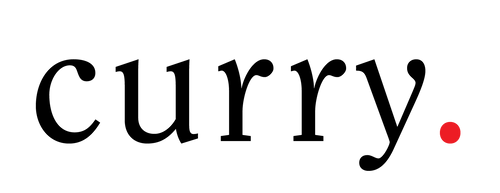An IIT Roorkee graduate and a serial coder, find out what inspired Rounak Banik to fire up his own PFP NFT project 'Scrappy Squirrels'. Also, a guide by him on how to list your art as NFTs online.
Tell us what got you interested in crypto?
Like a lot of people in the space, I started off by speculating on coin prices. I almost doubled my small investment in Dogecoin in mid-2021. The subsequent crash sobered me though and I turned my attention to the tech underlying crypto and web3.
My first introduction to web3 development was through courses offered by Buildspace. As part of the course, I ended up building a decentralized version of Reddit and an app where users could mint NFTs. Although my projects were trivial, it did give me a good understanding of what was possible.
I strongly believe that blockchain is on course to be one of the most transformative technologies of our lifetimes. It has the potential to bring welcome disruption across many industries, including finance, social media, and the creator economy. Although it was greed that fuelled my initial interest, I continue to be invested just so I can witness and maybe contribute to this incredible space.
What is an NFT? What’s special about it?
An item is ‘fungible’ if it can be replaced by another identical item. A hundred rupee note I have is, for all intents and purposes, the same as a note that you may have. Therefore, a non-fungible item would be something that is not replaceable. There is only one Mona Lisa in the world.
In the context of blockchain, an NFT is a token that is associated with some data and that can be easily verified to be the creation of a particular person.
If that sounds too archaic, let me give you an analogy. Imagine George R.R. Martin finally publishes Winds of Winter. He announces that he will only ever sign one copy of the book. Think of that copy as an NFT.
Digital creations have traditionally been extremely hard to monetize. Digital goods are easily reproducible and the concept of an ‘original’ simply doesn’t exist. However, if it were possible to sign digital goods in a way that is verifiable and impossible to duplicate or tamper, then a new avenue of revenue opens up for digital artists.
They, like GRRM above, can sell ‘signed copies’ of their creation. If the artist is well known, then the demand for such a signed copy would be huge. This is the crux of how NFTs operate within the creator economy.
But it doesn’t stop there. Let’s take the above example once again. This time, GRRM says that he will sign a hundred copies and everyone with a signed copy is invited to a super exclusive annual event. They will also get inside scoops into his work before the public does. In this case, he is providing utility to people that hold the signed copies over and above giving them a collectible.
There is an incredible amount of opportunity here for artists to capitalize on. NFTs as digitally signed artworks is just the beginning. If artists are able to give sustained utility beyond that, they are in pole position to earn much more than they currently do and create strongly knit communities of fans that always have their back.
You've recently launched an NFT project. What is your project ‘Scrappy Squirrels’ about?

Scrappy Squirrels is an NFT PFP project centered around education, collaboration, and opportunity.
As part of the project, we are creating educational material that will help developers, designers, artists, community managers, entrepreneurs, and investors to onboard into the crypto, blockchain, and web3 space.
Members of our community can purchase our NFTs to support us and unlock perks available exclusively to holders of the NFT (such as art galas, conferences, hackathons, lotteries, and guilds)
We hope to be able to create a diverse community of people new to web3 that can collaborate, experiment and network in a safe space using tools, resources, and guides provided by us.
Why should young creators hop on the bandwagon and list their art as NFTs?
NFTs represent a new and extremely potent revenue stream for digital creators. NFTs have also caught the attention of some of the biggest artists in the world and space is brimming with creativity and experimentation.
As a young creator in the NFT space, you should be able to network with some of the most creative people on the planet. It is highly likely that NFT’s biggest use case hasn’t been discovered yet and you could be the one to do that. If you’re lucky, you may even end up selling your creations for tens of thousands of dollars.
There is an almost infinite upside and very limited downside. As a creator, at least exploring NFTs should be a no-brainer.
Could you share with our readers, what is the process of listing one’s NFTs online?

Listing NFTs can be very painful (and expensive) in the beginning. The UX and costs also differ significantly from one platform to another.
Let me briefly explain the steps to list on OpenSea, the largest NFT marketplace in the word.
- Open an account with a centralized exchange like Wazirx or CoinDCX, and buy some Ether (ETH).
- Create a Metamask wallet
- Transfer ETH from the exchange to Metamask.
- Connect your Metamask wallet to the OpenSea website.
- Create an NFT using OpenSea’s interface by clicking the ‘Create’ button.
- List your NFT for sale by clicking on the ‘Sell’.
- If it is your first time, OpenSea will ask you to initialize your wallet. This will cost you approximately $100 worth of ETH. Every subsequent listing will be free though.
The user journey can prove to be a nightmare for uninitiated artists. We will be launching an article on Medium covering various marketplaces, how to use them, and comparing their visibility, prestige, and price. For the time being, a good place to start would be our blockchain intro article and the Opensea guide. The former shows you how to create a Metamask wallet, connect wallet to websites, and perform transactions without spending any real money.
If you need further help, reach out to us on Discord. We will be more than happy to assist you.
What are some NFT projects out there, that excite you?

I’m really excited about Developer DAO. It’s a decentralized autonomous organization (or DAO) of developers. Think of it as a community of engineers and designers coming together to collaborate, create, and network.
ENS (Ethereum Name Service) is technically an NFT project too. ENS makes it possible to have a domain-like name attached to your wallet. Instead of saying my address is 0xc361Fc33b99F88612257ac8cC2d852A5CEe0E217, I can simply say it is rounakb.eth.
Finally, I’m obviously excited about the Bored Ape Yacht Club. They are arguably the most well known NFT project in the world and they count multiple celebrities in their ranks. Their recent signings and deals also hint at them having Hollywood ambitions. I’m excited to see what they come up with.
Was there a project that inspired you to start your own NFT project?

Definitely Bored Ape Yacht Club. It’s easily one of the biggest cultural phenomenons of the decade. BAYC has managed to generate hundreds of millions of dollars in less than a year, and boasts one of the most influential and exclusive communities on the planet. It has become the gold standard of what is achievable with NFTs.
However, being a member will cost you at least $150,000. That is not a sum that I can afford. Which is why I started my own project that is hopefully more inclusive, more affordable, and friendlier to people relatively alien to the space.
You frequently blog about crypto and NFT tutorials. What are some fundamentals you cover in your tutorials?

The way things work in web3 world is significantly different to what we are used to. This is true regardless of if you are a developer, artist, community manager, or end user. There also tends to be large upfront costs to participating in anything meaningful.
For the time being, my blogging is focused on bridging this gap. So far, we have created tools and resources that help people understand what’s going on and more importantly, allow them to experiment without spending real money. We are still very early and there is a long way to go. But we do envision creating a repository of resources that will help you upskill and function like a crypto native.
What’s your vision with Scrappy Squirrels?
Through Scrappy Squirrels, we want to pioneer a web3 model of patronship. This is our pitch: we will produce excellent educational content for free that will introduce you to the world of web3. If you like our work and would be interested in supporting us, buy an NFT from our collection.
Apart from supporting us, the purchase of the NFT also makes you an official part of the Scrappy Squirrels community. This means you get access to private Discord channels and groups, get to participate in hackathons and art galas, take part in an exclusive conference, get sorted into guilds, and participate in friendly competition with other guilds.
This model allows us to do so much more than what would’ve been possible with something like Patreon. It allows us to create stronger, close-knit communities that play an extremely significant role in our journey. You can learn more about the project on our website and our Discord.
How can someone be a part of the Scrappy Squirrels world?

Join our Discord! It is open and free, and we will always keep it that way. When we launch our collection, do consider minting an NFT to support us. Doing so will unlock various perks that I mentioned above.
Where did you learn to code?
I learned coding in school when I was 13. I have been coding for more than a decade.
What’s the maximum amount of time you’ve coded without taking a break?
In my first year of college, I had bet my hostel wingmate that I would build a social networking website in a week. I did manage to do so, and it went viral in my college for a week or two. During this time, I remember coding once for 20 hours straight. That’s the longest I can think of.
Have you tried your hand with generative art (apart from Scrappy Squirrels)? Show us what you made?
No, I’m pretty terrible at art. The Scrappy Squirrels artwork was done by an artist named Muskan Raina. She is a part of the core team. I simply wrote the code that used her art style to generate tens of thousands of unique squirrels. Our code is open source, so anyone in the world can use it to create their own collections too.
We did experiment on a Panda collection though. Here are a few samples:



What are some cool blogs/ Youtube channels to follow to stay up-to-date with news of NFTs and the decentralised art world?

Quality NFT publications are unfortunately few and far between. Definitely check out our Medium publication. We regularly post web3 and NFT content for all kinds of audiences. We are also in talks with a creator to launch our own NFT newsletter. Apart from this, I'd recommend taking a look at a16z's NFT Canon. It's a comprehensive curation of resources on NFTs
I can vouch for more generic resources though. Decrypt, Cryptechie, and The Ken’s Tokenised are excellent newsletters. Finematics, in my opinion, is the best crypto YouTube channel. I would also suggest following leaders of the space on Twitter. Start off with the likes of Chris Dixon, Balaji Srinivasan, Preethi Kasireddy, Nader Dabit, Beeple, and Vitalik Buterin.
Follow Rounak's work and the project here:
Website: https://scrappysquirrels.co/
Discord: https://discord.gg/8UqJXTX7Kd
Medium: https://medium.com/scrappy-squirrels
Personal Twitter: https://twitter.com/Rounak_Banik




